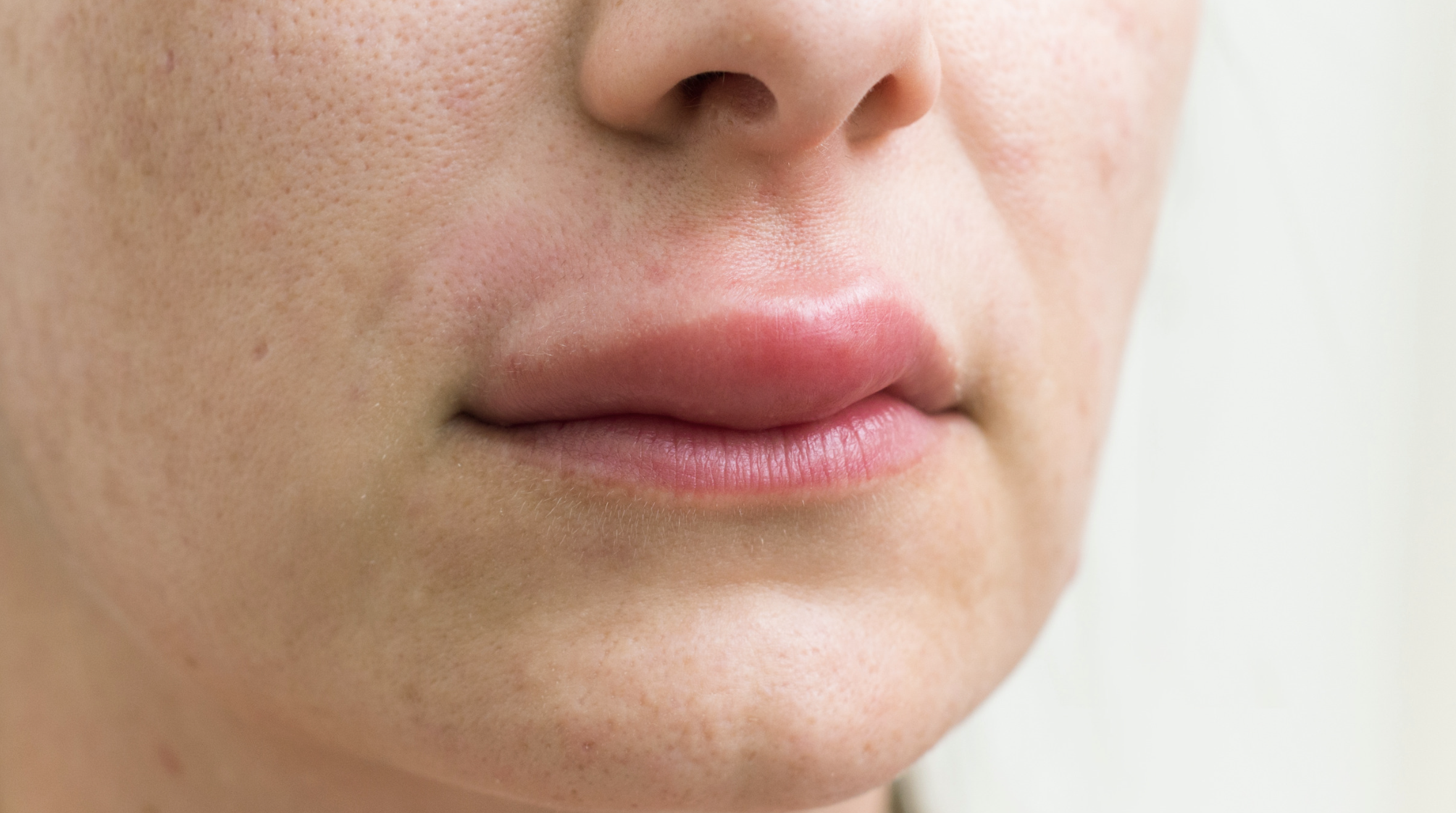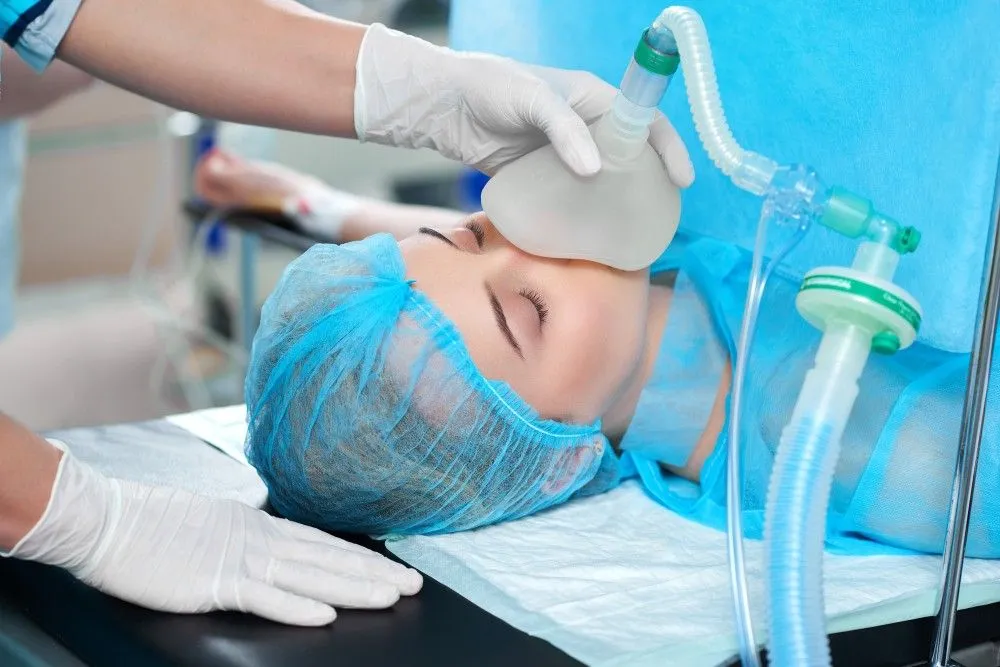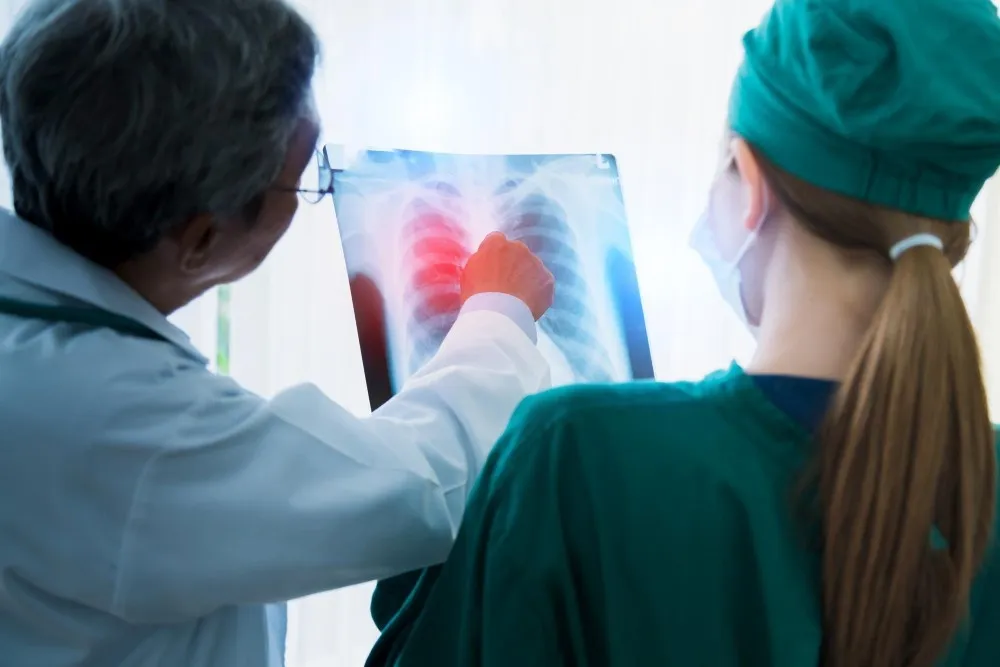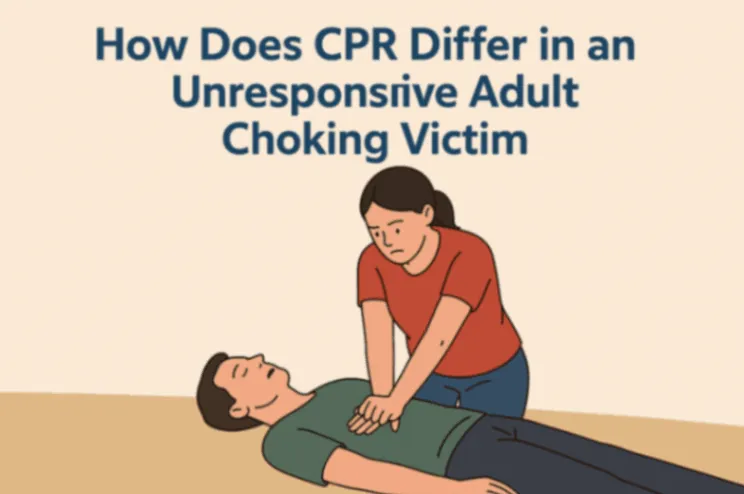Being diagnosed with lung cancer, severe lung infections, or even a birth defect can sometimes lead to the removal of one lung through surgery (pneumonectomy). Naturally, this raises a crucial question: Can you live with one lung? While it may sound daunting, the human body is far more adaptable than it appears. In this article, we’ll explain how life with one lung is possible, the challenges you may face, and the best ways to take care of your health after lung removal.
Can You Live With One Lung?
Yes, you can live with one lung. After lung removal surgery (called pneumonectomy) due to medical conditions like lung cancer, lung infections, or traumatic injuries, the remaining lung takes the workload by expanding and working harder to meet the body's need for sufficient oxygen. The adaptability of one lung allows you to breathe, engage in physical activities, and maintain a good quality of life.
However, you may experience some limitations like fatigue, shortness of breath while exercising, reduced exercise capacity, and a high risk of respiratory infection. Life expectancy with one lung will depend on the cause of removal, age, post-surgical recovery, and the overall health of a person.
How Does the Body Adapt After One Lung Removal?
This is how your body adapts after one lung is removed:
-
Compensatory Lung Expansion: The remaining lung slowly expands to take the workload, like inhaling more air, helping maintain enough blood oxygen levels.
-
Increased Breathing Efficiency: With time, the body becomes much more efficient in exchanging oxygen, allowing you to perform daily activities without significant restrictions.
-
Stronger Respiratory Muscles: The chest and diaphragm muscles work harder to help with breathing.
-
Improved Oxygen Levels in the Blood: The circulatory system of the body becomes highly efficient in supplying oxygen.
-
Brain and Body Adaptation: The brain sends signals to the body to modify the activity levels depending on the availability of oxygen.
How Long Can You Live With One Lung?
According to a study, the life expectancy after a pneumonectomy is:
-
5-year survival rate: Around 30% for people with cancer.
-
10-year survival rate: Around 19% for individuals with cancer
People with benign lung cancer generally live better compared to ones who have malignant cancer. But the exact duration of life can vary based on several factors, such as:
1. Cause of Lung Removal:
People who undergo lung removal surgery due to lung cancer or chronic lung disease have a shorter life span compared to those who have their one lung removed because of lung infection or trauma.
2. Stage of the Lung Cancer
Individuals with stage 1 lung cancer have higher survival rates than those who are struggling with stage 4 lung cancer. Earlier stages are more responsive to treatments, while advanced stages are challenging, as they have spread to more body parts.
3. Age & Overall Health:
Younger and healthier people basically have a better life expectancy than older or less healthy ones. This is because older individuals might already be living with some health issues.
4. Post-Surgical Care and Lifestyle:
Following proper instructions after surgery, maintaining a healthy lifestyle, and avoiding alcohol and smoking can help improve life after the treatment.
5. Regular Check-ups & Access to Medical Care:
Regular health checkups and immediate treatment of any complications after the surgery can help with optimal health and a longer lifespan.
With proper care, many individuals can lead a fulfilling and long life with one lung.
4 Challenges of Living With One Lung
Though most people lead healthy lives after the lung removal surgery once their bodies adjust to the changes, there come some challenges too, such as:
1. Shortness of Breath
-
Research reports that shortness of breath is a common issue after surgery in lung cancer patients. However, most individuals can still engage in daily tasks like light jogging, walking, and swimming.
-
The degree of breathlessness may vary from one person to another based on their age, physical condition, and overall health.
2. Reduced Exercise Capacity
-
A study states that pneumonectomy can cause a reduction in lung capacity. This can make it harder to practice strenuous physical activities like heavy lifting, running, cycling, hiking, and rock climbing.
-
This happens due to shortness of breath and reduced oxygen intake. However, rehabilitation and training can help you regain stamina slowly, allowing you to perform physical activities at a qualified level.
3. Higher Risk of Respiratory Infections
-
With one lung, the ability of the body to combat respiratory infections like pneumonia may be reduced.
-
Hence, it becomes more crucial to maintain good respiratory health by avoiding smoking and getting vaccinations for flu and pneumonia.
4. Emotional & Mental Health Impact
-
Concerns about living a normal life, coping with the loss of body parts, and practicing physical activities after a lung surgery can put stress on the person. This can lead to health issues such as anxiety, depression, or fear in them.
-
In these cases, support from mental health professionals, family members, and friends can help a person handle the situation and regain their confidence.
How to Live After Pneumonectomy?
Physical Capabilities & Limitations
Though people can engage in some of the normal activities, certain adjustments might be needed:
-
Daily Activities: Everyday tasks, such as light housework, working at the desk, walking, and driving, are manageable. Most individuals return to their previous jobs.
-
Physical Activity: Limit high-intensity physical activities or exercises and practice moderate exercises, such as swimming, yoga, walking, and light cycling.
-
Travel Considerations: Though safe to travel, always consult healthcare professionals before planning to travel by air and use supplemental oxygen while flying through flights.
Breathing Techniques & Management
Learn effective breathing techniques to maximize lung efficiency:
-
Diaphragmatic Breathing: Helps use the diaphragm more efficiently. This boosts oxygen intake and lowers the load of breathing.
-
Pursed-Lip Breathing: Assists with controlling shortness of breath and ensures proper ventilation by keeping the airways wide during exhalation.
-
Paced Breathing: Helps coordinate your breathing with activities. This prevents the risk of excessive breathing difficulty during everyday tasks.
Warning Signs Your One Lung May Not Be Functioning Well
An effective approach to prevent respiratory-related issues from rising is familiarizing yourself with warning signs indicating poor lung function:
-
Shortness of breath
-
Chronic cough
-
Unexplained fatigue
-
Trouble breathing
-
Increased mucus production
-
Tightness while breathing
-
Less stamina
-
Persistent symptoms that do not go away
If you or your loved one is living with only one lung or has any conditions that can raise the chances of needing a lung removal surgery, see a thoracic surgeon or pulmonologist to know how to improve your respiratory health.
Why Would You Need a Lung Removed?
These factors are the reason why you need a lung surgery (Pneumonectomy):
-
Lung Cancer: To get the tumor removed and prevent the risk of spread of cancer.
-
Severe Lung Infections: Health conditions such as chronic pneumonia or tuberculosis might require lung removal to prevent the spread of infection.
-
Severe Trauma or Injury: For severe injuries or damage to the lungs in case of accidents or stab wounds, the providers may suggest lung removal surgery.
-
Congenital (Birth) Defects: Some individuals have lung abnormalities since birth that need to be surgically removed as they affect the function of the lungs.
-
Chronic Lung Diseases: In rare cases, people with conditions like severe Chronic Obstructive Pulmonary Disease (COPD) or bronchiectasis may need pneumonectomy to reduce symptoms and enhance quality of life.
Understanding Pneumonectomy (Lung Removal Surgery)
A pneumonectomy is a surgical procedure that a thoracic surgeon performs to remove one entire damaged lung. It is conducted to treat medical conditions like lung cancer, severe lung infections, traumatic injuries, or other lung diseases.
Before Surgery: What Happens
Before pneumonectomy, the healthcare provider will generally perform a physical examination and some tests to monitor your lung function and check your overall health to determine whether you are a good candidate for pneumonectomy.
Moreover, before undergoing the surgery:
-
Inform your doctor about all your current over-the-counter (OTC) and prescription medicines, herbal products, vitamins, and other supplements.
-
Stop taking blood thinners and quit smoking before the surgery.
-
Never stop any medications unless a doctor advises.
-
Tell your doctor if you have any allergies or have had a reaction to general or local anesthesia.
-
Daily exercise is an important part of getting ready for surgery. Ask your healthcare provider what kind is best for you.
-
Follow all the instructions given by the doctor, for instance, not drinking or eating before the surgery.
You will have certain imaging tests that include:
-
Chest X-ray: To monitor the lung function.
-
Chest CT scan: To have a detailed image of the lungs.
-
PET scan: To detect cancer tissue.
-
Electrocardiogram (ECG or EKG): To check heart rhythm.
-
Blood tests: To evaluate the overall health.
-
Lung function test: To check the functioning of the other lung before surgery
-
Ventilation-perfusion scan: To find out which lung areas contribute most to the breathing process.
Procedure of Pneumonectomy: How the Surgery Works
-
Pre-Surgery Evaluation: The healthcare providers perform lung function tests, X-rays, CT scans, and an overall health assessment to check lung health and function.
-
Anesthesia Administration: The providers will give general anesthesia to ensure you're unconscious and experience pain-free surgery.
-
Incision: A thoracic surgeon makes one incision on the side of your chest to get access to the lung.
-
Lung Removal: The surgeon then carefully detaches the damaged lung from the blood vessels, bronchus, and surrounding tissues.
-
Sealing and Closing: Next, the provider seals the bronchial stump to prevent air leaks and closes the blood vessels to prevent bleeding.
-
Drain Placement: A chest tube might be placed to get rid of excess air or fluid.
-
Surgical Closure: The surgeon stitches the chest incision.
After a Pneumonectomy: Recovery Process
-
Hospital Recovery: A hospital stay for about 5 to 10 days for pain management and proper monitoring of breathing, heart rate, oxygen levels, and blood pressure. The full recovery will take a few weeks or months.
-
Working with Respiratory Therapists: Respiratory therapists teach you specific breathing exercises to perform many times a day. This will help strengthen your breathing and alleviate accumulated fluid from the surgery.
Risks & Complications of Pneumonectomy
Most people do well after pneumonectomy, but some may experience these possible complications:
-
Blood clot in the lung
-
Pneumonia
-
Respiratory failure
-
Too much bleeding
-
Breathing difficulties.
-
Complications from anesthesia
-
Abnormal heart rhythms
-
Low blood flow to the heart
-
If you experience these complications, seek medical attention immediately.
Living with One Lung
People living with one lung need some adjustments that include:
Medicines
Take the following medications:
-
Bronchodilators: Help open airways.
-
Steroids: Reduce inflammatory levels.
-
Antibiotics: Treat or stop illness.
Oxygen Therapy
-
Supplemental oxygen can help preserve enough levels of blood oxygen in very hypoxic people (who lack a sufficient amount of oxygen in the body).
Respiratory Care
-
Involves physical activities and effective treatments provided to improve stamina, strengthen the lungs, and teach people some management tips to manage their illness.
Nutrition
-
The healthcare professionals recommend adding anti-inflammatory and high-protein foods to the diet, as they help repair and strengthen muscle.
Exercise
-
Engage in breathing exercises, walking, swimming, and yoga to increase the cells in the lungs quickly and improve lung capacity. Avoid strenuous exercise, like heavy weightlifting, as it causes extreme physical strain, leading to fatigue or low energy.
Avoid Pollutants
-
Avoid smoking, secondhand smoke, and other environmental pollutants to keep your other lung healthy.
10 Expert Tips for Staying Healthy with One Lung
Follow these tips to live healthily with one lung:
1. Practice Deep Breathing: Aids in strengthening the remaining lungs and boosts oxygen intake.
2. Stay Active: Practice light exercises such as walking or swimming to improve lung function.
3. Avoid Smoking and Pollutants: Avoiding smoke, chemicals, and pollution can keep your lungs protected from damage.
4. Follow a Healthy Diet: Consume antioxidant-rich foods like fruits and veggies to protect from infections and vitamin C-rich foods like broccoli, Brussels sprouts, and citrus fruits for faster healing. Avoid salty foods as they retain water.
5. Stay Hydrated: Drink a lot of water to clear the airways and prevent the risk of mucus accumulation.
6. Get Vaccinated: Get vaccination for flu and pneumonia to keep yourself protected from these infections as they affect the lungs.
7. Practice Breathing Techniques: Engage in pursed-lip breathing technique to manage your breathlessness.
8. Manage Stress: By activating the "fight-or-flight" response of the body, stress can worsen breathing issues. So, practice meditation, yoga, or relaxation exercises.
9. Monitor Breathing Changes: If you notice a persistent cough or extreme shortness of breath, consult a doctor.
10. Join Support Groups: Meet or connect with other people who have also undergone lung removal, as they can help with practical advice and emotional support.
11. Get Enough Sleep: Quality sleep each night gives the proper time for the body to recover well from everyday activities, thus supporting healing.
12. Get Regular Check-ups: Always follow up with a doctor to ensure proper functioning of your lungs.
Nutrition-Specific Tips After A Lung Removal Surgery
A healthy diet is crucial to improving the quality of life when living with one lung. Your eating habits will positively affect the performance of your lungs and increase healthy cells.
Here is the diet program you should follow:
-
Eat the foods that can be easily swallowed and chewed (e.g., fruit juice or soup), as you might face challenges in breathing while eating, in the first few weeks of the surgery.
-
Consume the food in small bites and at frequent intervals, as large bites make breathing more challenging.
-
Eat foods rich in vitamin C and E, which speed up healing. Vitamin C aids in the transportation of oxygen to the cells, and vitamin E regenerates the cells.
-
Add antioxidant-rich fruits & vegetables to your diet to help the body fight off infections and flush out toxins.
-
Have fat-free meats (like chicken) or fish for protein that helps with recovery.
-
Limit the intake of salt, as it can lead to water retention (edema) in the body.
-
Drink at least 7 glasses of water throughout the day to maintain lung health.
-
Always read the product's label for foods highly rich in cholesterol, saturated fats, and trans fats.
When to See a Doctor?
Consult with the healthcare providers if you experience:
-
Severe difficulty breathing or shortness of breath
-
Chest pain or discomfort
-
Signs of respiratory infection, like extreme cough, fever, or colored sputum
-
Unusual fatigue or weakness
-
Swelling in the ankles or legs
-
Any concerning symptoms
Can Your Lung Regenerate?
No, there is no possibility of the lung regenerating or growing back if it is completely removed. However, other organs around the lungs can shift to the place where your lung was once. This is the normal way of the body adapting after surgery. Maintaining the health of the lungs is a vital part of living well. So, eat healthily, exercise regularly, avoid smoking, and follow up regularly with your doctor.
Final Thoughts: Living Well With One Lung
So, can you live with 1 lung? Absolutely, many people go on to live fulfilling lives with just one lung. While you may face challenges like reduced stamina, shortness of breath, or fatigue, these can often be managed with the right lifestyle choices and medical support. Prioritizing a balanced diet, regular exercise, pulmonary rehabilitation, vaccinations, and routine health check-ups can significantly improve your quality of life.
The human body is remarkably resilient; losing a lung doesn’t mean losing the ability to live well. With proper care and determination, life with one lung is not only possible but can still be meaningful and active.
أسئلة متكررة
How long can you live with one lung?
You can live a full, healthy life with one lung which will depend on the cause of lung removal and overall health status. Life expectancy with cancer is lower and with infection or trauma is higher.
What can you not do with one lung?
Living with one lung can limit your ability to practice strenuous activities. But with proper training, you can perform some exercises.
Is it OK to fly with one lung?
Yes, you can fly with one lung. But, always discuss with your doctor who can suggest supplemental oxygen for long flights.
Can I exercise with one lung?
Yes, you can but your exercise capacity may be reduced. But, with proper training, you can gradually practice strenuous physical activities.
What fills the space where the other lung was?
It is filled with air. With time, the body produces fluid that gradually fill that gap and surrounding organs, like diaphragm and heart shifts slightly.
Can you live without both lungs?
It's not possible. The lungs are very crucial for inhaling oxygen and releasing carbon dioxide that is necessary for survival.
Do you need to be on oxygen or use special equipment with one lung?
No, your lungs can adapt themselves. But if there is breathing difficulty or other respiratory problems, the doctors can recommend supplemental oxygen or lifestyle adjustments to enhance the quality of life.
-User-1754377709.png)
كُتب بواسطة







